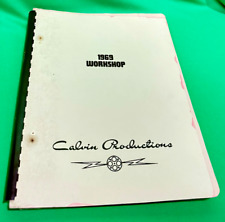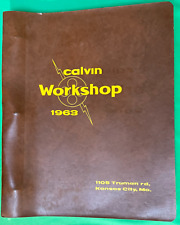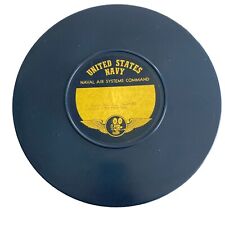16mm FILM 1940s HOME MOVIE WWII War Ravaged COLOGNE Occupied GERMANY For Sale


When you click on links to various merchants on this site and make a purchase, this can result in this site earning a commission. Affiliate programs and affiliations include, but are not limited to, the eBay Partner Network.

16mm FILM 1940s HOME MOVIE WWII War Ravaged COLOGNE Occupied GERMANY :
$574.00
CLICK ON ANY PHOTO BELOW TO SEE A *HUGE* ENLARGEMENT!click to enlargeHere\'s an interesting and actually in some ways a heartbreaking 16mm home movie that dates to the 1940s, possibly the 50s. (I did not see any edge code so that made date ID difficult.). This film shows a visit to what appears to be Occupied Germany -- in particular what appears to be Cologne (Koln in German). It\'s obviously a beautiful but war-ravaged city, and you\'ll see some rubble heaps. But there\'s also signs of recovery. Check out the amazing image of the Norden store front that is stocked with nice looking luxury goods including tins of food and jars of preserves. There\'s also a great shot of a little band of musicians on the street -- and the girls in the park knitting socks so they don\'t freeze their feet off in the coming winter! Not the kind of thing you would normally see a tourist shoot... very interesting and memorable images.See photos!Amazing footage that you won\'t see for sale again anytime soon. Totally unique! This is a public domain film so you can use it on your website, as stock footage, etc. Some really fantastic fantastic footage in here! See photos. Condition is good, no vinegar odor. This is a SILENT film that comes on a 50\' reel. All photos are from actual film for sale.offer now and secure your price point -- remember basic strategy for offerding -- if you want this item for $40 and some other person would only offer up to $39, by offerding first you beat them out.No copies have been made of this material.Save a film from destruction -- adopt one today and preserve it!See photos they describe this better than I ever could!Due to the proliferation of film to video transfer, all films are now sold \"as is\" no returns, no exchanges. I try to describe items accurately but some condition aspects of these items are subjective. Cans are not included in the sale unless mentioned or shown. Foreign buyers please use the shipping calculator at the bottom of the sale to avoid confusion or disappointment. Films shipped overseas are subject to handling fees as they must be accompanied by customs forms and hand delivered to the post office.I do not negotiate shipping rates but I do combine shipping on multiple items purchased. Just wait for me to send you a combined invoice after purchase, please.People often ask, how can I get the 16mm film I won transferred to DVD so I can watch it? Contact me at the end of the sale for more information. Another common question, is this film a sound film or a silent film? In almost every case, items described as \"home movies\" are silent films. How do you tell the difference? Silent films have sprockets on both sides, and sound films only on one side. Some people want to know, \"how long is this film\"? Well that\'s an interesting question. Sound films run at 24 frames per second, but silent films were often shot at a slower rate, 18 frames per second. This means that while a 400\' reel of sound movies runs about 11 minutes long, a similar 400\' reel of silent movies will run 14.5 minutes or so if projected at the proper speed. Similarly, a 100\' reel of film will run three to four minutes.Finally, people ask about vinegar odor and/or the \"mothball\" smell. The mothball or camphor smell is actually nothing to worry about -- it\'s a residue left over from camphor oil which was recommended by Kodak to keep films supple. Back in the 20s and 30s Kodascope film cans actually had a paper filter built into them which could be saturated with a drop of camphor oil, and it seems to have worked effectively. I haven\'t heard the whole story but someone said its use was discontinued during WWII due to military use of camphor. Different situation if a film is emitting a vinegar odor, that indicates it is beginning to deteriorate. Films that have light vinegar odor are almost always projectable and can be telecined. Films with heavier levels of odor or full blown \"vinegar syndrome\" -- an extreme version of the problem -- may require care, treatment with chemicals or molecular sieves, or other handling or repair before transfer. In some extreme cases they may not be salvageable. You can read a lot more about this on-line. 16mm and 8mm films qualify for Media Mail shipping in the USA, although with small reels we will sometimes ship by First Class or Priority Mail, our choice please. Foreign buyers, please note that USPS prices for heavy films can be prohibitive. More on this: Cologne (English pronunciation: /kəˈloʊn/, German: Köln [kœln] ( listen), Colognian: Kölle [ˈkœɫə] ( listen)) is Germany\'s fourth-largest city (after Berlin, Hamburg, and Munich), and is the largest city both in the German Federal State of North Rhine-Westphalia and within the Rhine-Ruhr Metropolitan Area, one of the major European metropolitan areas with more than ten million inhabitants.Cologne is located on both sides of the Rhine River. The city\'s famous Cologne Cathedral (Kölner Dom) is the seat of the Catholic Archbishop of Cologne. The University of Cologne (Universität zu Köln) is one of Europe\'s oldest and largest universities.[2]Cologne was founded and established in the first century AD, as the Roman Colonia Claudia Ara Agrippinensium in Ubii territory.[3] It was the capital of the Roman province of Germania Inferior and the headquarters of the military in the region until occupied by the Franks in 462. During the Middle Ages it flourished as one of the most important major trade routes between east and west in Europe. Cologne was one of the leading members of the Hanseatic League and one of the largest cities north of the Alps in medieval and renaissance times. Up until World War II the city had undergone several other occupations by the French and also the British. Cologne was one of the most heavily bombed cities in Germany during World War II. The bombing reduced the population by 95% and destroyed almost the entire city. With the intention of restoring as many historic buildings as possible, the rebuilding has resulted in a very mixed and unique cityscape.Cologne is a major cultural centre for the Rhineland; it is home to more than thirty museums and hundreds of galleries. Exhibitions range from local ancient Roman archeological sites to contemporary graphics and sculpture. The Cologne Trade Fair hosts a number of trade shows such as Art Cologne, imm Cologne, Gamescom, and the Photokina. During World War II, Cologne was a Military Area Command Headquarters (Militärbereichshauptkommandoquartier) for the Military District (Wehrkreis) VI of Münster. Cologne was under the command of Lieutenant-General Freiherr Roeder von Diersburg, who was responsible for military operations in Bonn, Siegburg, Aachen, Jülich, Düren, and Monschau. Cologne was home to the 211th Infantry Regiment and the 26th Artillery Regiment.During the Bombing of Cologne in World War II, Cologne endured 262 air raids[15] by the Western Allies, which caused approximately 20,000 civilian casualties and almost completely wiped out the centre of the city. During the night of 31 May 1942, Cologne was the target of \"Operation Millennium\", the first 1,000 bomber raid by the Royal Air Force in World War II. 1,046 heavy bombers attacked their target with 1,455 tons of explosives, approximately two-thirds of which were incendiary.[16] This raid lasted about 75 minutes, destroyed 600 acres (243 ha) of built-up area, killed 486 civilians and made 59,000 people homeless. By the end of the war, the population of Cologne had been reduced by 95 percent. This loss was mainly caused by a massive evacuation of the people to more rural areas. The same happened in many other German cities in the last two years of war. By the end of 1945, however, the population had already recovered to approximately 500,000.By the end of the war, essentially all of Cologne\'s pre-war Jewish population of 11,000 had been deported or killed by the Nazis.[17] The six synagogues of the city were destroyed. The synagogue on Roonstraße was rebuilt in 1959.[18]Post-war Cologne until today[edit]Despite Cologne\'s status as the largest city in the region, nearby Düsseldorf was chosen as the political capital of the federated state of North Rhine-Westphalia. With Bonn being chosen as the provisional capital (provisorische Bundeshauptstadt) and seat of the government of the Federal Republic of Germany (then informally West Germany), Cologne benefited by being sandwiched between two important political centres. The city became and still is home to a number of federal agencies and organizations. After reunification in 1990, Berlin was made the capital of Germany 
|
|
Other Related Items:
Related Items:
1969 CALVIN WORKSHOP Annual 16mm Industrial Film Production Seminar Manual RARE $300.00

1963 CALVIN WORKSHOP Annual 16mm Industrial Film Production Seminar Manual RARE $350.00

UNITED STATES NAVY ANNAPOLIS THE FIRST YEAR FILM 16MM IN ORIGINAL PLASTIC CASE $169.97
|






